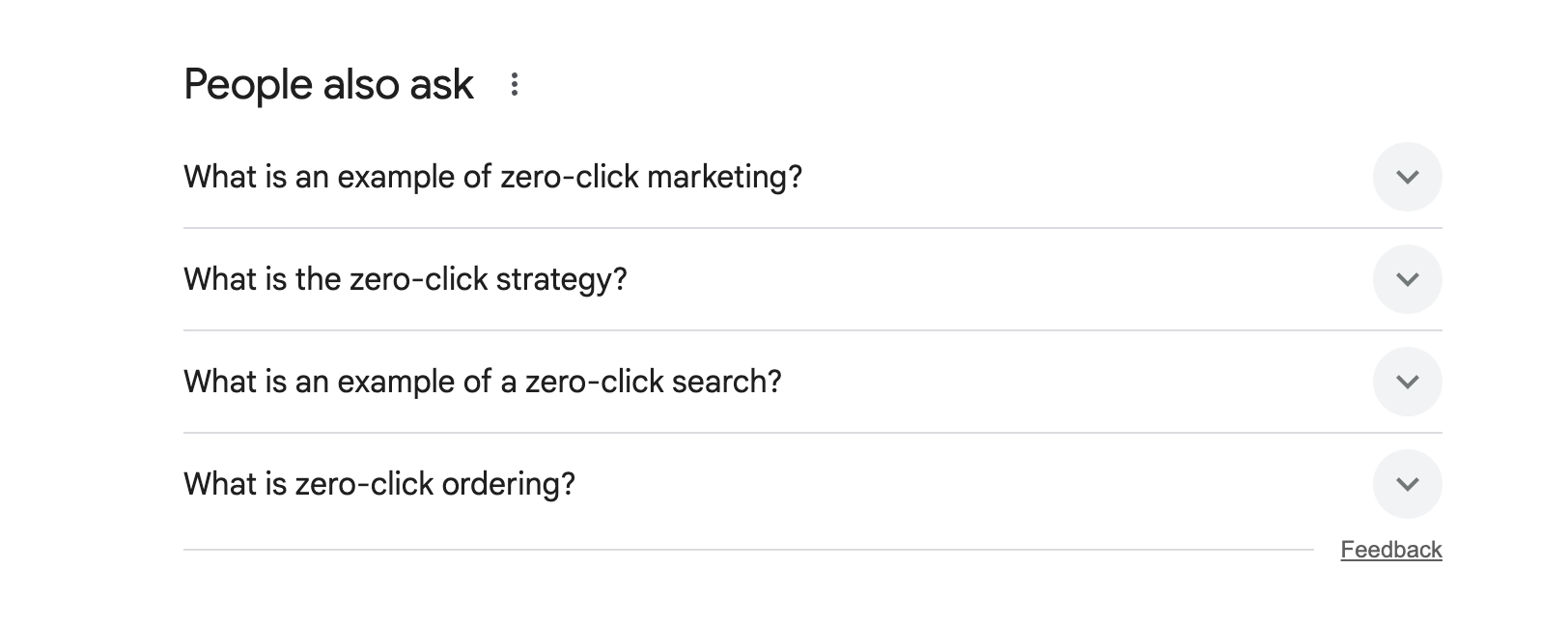
The way people search for and consume information online has changed drastically. With search engines, social platforms, and AI assistants delivering instant answers, many users no longer need to click through to websites to find what they want. This growing phenomenon, known as zero-click marketing, is reshaping the digital landscape. For eCommerce stores, this trend brings both opportunities and challenges. While it can reduce website traffic, it also opens new ways to engage customers directly within search results and platforms. Understanding zero-click marketing is essential for eCommerce brands that want to stay visible and competitive.
To fully understand its impact, let’s explore what zero-click marketing is and how it affects eCommerce businesses today.
Zero-click marketing refers to the practice of providing users with the information they need directly on the platform where they are searching, without requiring them to click through to a brand’s website. This includes:

In short, instead of waiting for customers to visit your site, you meet them where they already are, within search engines, marketplaces, and apps.
For eCommerce businesses, the rise of zero-click searches affects visibility, conversions, and brand control. Customers are increasingly making purchase decisions without browsing a website in detail. Here’s why it matters:
One of the most noticeable effects of zero-click marketing is the decline in traditional website visits. Since search engines and social media now display product details, reviews, and answers directly on their platforms, users often find what they need without clicking through to your site. While this can feel like a setback, it highlights the importance of adapting your strategy. Instead of focusing only on driving traffic, eCommerce stores must also optimize content for visibility within zero-click environments.
Although fewer people may land on your site, zero-click marketing can significantly boost brand exposure. Platforms like Google Shopping or Instagram showcase products and brand names to a much wider audience, sometimes reaching customers who would never have found your store otherwise. Even when users don’t click, seeing your brand repeatedly builds familiarity and trust. Over time, this recognition can influence future purchasing decisions.
As more customer journeys take place on third-party platforms, eCommerce businesses become increasingly dependent on algorithms they don’t control. Search engines, social apps, and marketplaces decide what content gets visibility, which can create challenges if those algorithms shift. However, this dependence also opens doors to new traffic and sales opportunities. Stores that learn to adapt quickly to platform changes often gain a competitive advantage.
The rise of zero-click marketing forces a rethinking of SEO strategies. Traditional SEO centered on attracting clicks to websites, but now the goal is to deliver concise, high-value answers that rank in featured snippets or product-rich results. This means optimizing for voice search, creating clear FAQ content, and using structured data to help search engines display your products effectively. By evolving SEO practices, stores can maintain relevance and visibility even without direct clicks.
Zero-click environments often accelerate the shopping journey. Consumers can instantly compare prices, read reviews, and sometimes even make purchases without leaving the search or social platform. This reduces the need for lengthy browsing and shortens the decision-making process. For eCommerce stores, ensuring products are fully optimized for these quick interactions can directly translate into higher conversions.
The rise of zero-click marketing doesn’t mean eCommerce stores should give up on visibility or sales. Instead, it requires a shift in strategy, focusing on how to appear prominently in the very places customers are searching, scrolling, and shopping. By adapting your approach to align with these new behaviors, you can turn zero-click interactions into opportunities for growth. Here are some practical strategies to ensure your store thrives in this new landscape.
Structured data markup (schema) is essential for helping search engines understand your products and display them in enhanced formats. By adding schema for details like pricing, availability, reviews, and FAQs, your listings are more likely to appear in featured snippets or rich results. This not only increases visibility but also builds trust, as customers see clear and accurate information before clicking through. For example, you can use Ryviu to optimize and show reviews and ratings on Google search results.

Social media platforms like Instagram, TikTok, and Facebook are no longer just for discovery, but they’re now full-fledged shopping hubs. By enabling shopping features, tagging products in posts, and integrating catalogs, you make it easy for customers to purchase without leaving the app. This taps into the behavior of younger audiences who prefer seamless in-app shopping experiences.
Since many customers may not land on your website, your brand needs to stand out wherever it appears. High-quality product images, compelling descriptions, and consistent branding across platforms make a strong impression even in zero-click environments. Investing in customer reviews and social proof further enhances trust, helping your brand remain memorable even without direct site visits.

With the rise of voice assistants like Alexa, Siri, and Google Assistant, more consumers are shopping and searching using conversational queries. Optimizing content for natural language questions and providing concise answers helps your brand surface in these results. For eCommerce stores, this means anticipating common questions about your products and addressing them in an accessible, voice-friendly format.
Traditional analytics often emphasize website visits, but zero-click marketing requires a broader view of performance. Tools that measure impressions, engagement, and conversions across platforms give a clearer picture of your reach. By shifting focus from clicks to impact, you can better evaluate the effectiveness of your zero-click strategies and refine them for greater results.
Zero-click marketing is not the end of eCommerce websites, but it’s a major shift in how customers find and shop for products. Instead of relying solely on bringing people to your online store, you must meet them where they already spend their time, whether that’s Google, TikTok, Instagram, or voice search results. By embracing zero-click strategies, eCommerce businesses can turn reduced traffic into increased visibility, trust, and sales opportunities.